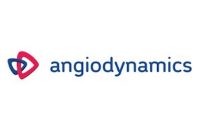Expansion Driven by NICE Guidelines and Enhanced Reimbursement for the Neovasc Reducer™
VANCOUVER and MINNEAPOLIS, July 05, 2022 (GLOBE NEWSWIRE) — via NewMediaWire – Neovasc, Inc. (“Neovasc” or the “Company”) (NASDAQ, TSX: NVCN) today announced that the company has expanded its direct sales operations in Europe to include the United Kingdom, effective July 1, 2022. The company has hired its first two direct employees in England and plans future growth in the sales team as the commercial requirements increase.
The decision to move to a direct sales operation in the U.K. was driven by the Neovasc Reducer (“Reducer”) being granted national reimbursement in England following inclusion in the most recent High-Cost Tariff Excluded Devices (HCTED) national catalogue. Hospitals can order the Reducer and bill the cost of the device directly to NHS England.
Fred Colen, Neovasc President and Chief Executive Officer, said, “We are pleased to expand our direct presence into the United Kingdom and want to thank our partners at Healthcare 21 for their excellent foundational efforts supporting the early growth of Reducer. We are now poised to provide even deeper support with a full-time dedicated team in the U.K. and intend to continue to invest in clinical research and field personnel to support patients, physicians, and hospitals.”
Additionally, last year the United Kingdom’s Interventional Procedures Programme at the National Institute for Health and Care Excellence (“NICE”) issued guidance supporting the implantation of the Reducer in appropriate patients suffering from refractory angina. According to the guidance document, “Coronary sinus narrowing device implantation is indicated for people in whom [1] other treatment options (medical or surgical) have failed, or [2] are not possible. The aim is to reduce symptoms and to improve quality of life.”
Prof. Jonathan Hill, MD, Consultant Interventional Cardiologist at Royal Brompton & Harefield NHS Foundation Trust, London, U.K, an early pioneer in the development of Reducer therapy, commented, “An important next step in the widespread use of the therapy is a robust program of training and proctoring. We are looking forward to the support of Neovasc’s direct operation in the UK in training new operators and centers and allowing them to offer the Reducer therapy for all their indicated patients.”
About Reducer
The Reducer is CE-marked in the European Union for the treatment of refractory angina, a painful and debilitating condition that occurs when the coronary arteries deliver an inadequate supply of blood to the heart muscle, despite treatment with standard revascularization or cardiac drug therapies. Reducer is investigational in the United States in the COSIRA-II clinical trial. Refractory angina, resulting in continued symptoms despite maximal medical therapy and without revascularization options, affects millions of patients worldwide, who typically lead severely restricted lives because of their disabling symptoms. The Reducer is designed to alter blood flow within the myocardium of the heart and increase the perfusion of oxygenated blood to ischemic areas of the heart muscle, which may provide relief of angina symptoms.
About Neovasc Inc.
Neovasc is a specialty medical device company that develops and markets products for the rapidly growing cardiovascular marketplace. Its products include Reducer, for the treatment of refractory angina, which is not currently commercially available in the United States and has been commercially available in Europe since 2015, and Tiara™ for the transcatheter treatment of mitral valve disease, which is currently under clinical investigation in the United States, Canada, Israel, and Europe. For more information, visit: www.neovasc.com.
Investors
Mike Cavanaugh
ICR Westwicke
Phone: +1.646.877.9641
Mike.Cavanaugh@westwicke.com
Media
Sean Leous
ICR Westwicke
Phone: +1.646.866.4012
Sean.Leous@westwicke.com
Forward-Looking Statement Disclaimer
Certain statements in this news release contain forward-looking statements within the meaning of the U.S. Private Securities Litigation Reform Act of 1995 and applicable Canadian securities laws that may not be based on historical fact. When used herein, the words “expect”, “anticipate”, “estimate”, “may”, “will”, “should”, “intend,” “believe”, and similar expressions, are intended to identify forward-looking statements. Forward-looking statements may involve, but are not limited to, plans for future growth in the sales team as the commercial requirements increase, the growth and adoption of the Reducer, the intention to continue to invest in clinical research and field personnel to support patients, physicians, and hospitals and the growing cardiovascular marketplace. Forward-looking statements are based on estimates and assumptions made by the Company in light of its experience and its perception of historical trends, current conditions and expected future developments, as well as other factors that the Company believes are appropriate in the circumstances. Many factors and assumptions could cause the Company’s actual results, performance or achievements to differ materially from those expressed or implied by the forward-looking statements, including, without limitation, risks around the Company’s ability to continue as a going concern; risks around the Company’s history of losses and significant accumulated deficit; risks related to the COVID-19 coronavirus outbreak or other health epidemics, which could significantly impact the Company’s operations, sales or ability to raise capital or enroll patients in clinical trials and complete certain Tiara development milestones on the Company’s expected schedule; risks relating to the Company’s need for significant additional future capital and the Company’s ability to raise additional funding; risks relating to the sale of a significant number of Common Shares; risks relating to the possibility that the Company’s Common Shares may be delisted from the Nasdaq or the TSX, which could affect their market price and liquidity; risks relating to the Company’s conclusion that it did have effective internal control over financial reporting as of December 31, 2021 and 2020 but not at December 31, 2019; risks relating to the Common Share price being volatile; risks relating to the Company’s significant indebtedness, and its effect on the Company’s financial condition; risks relating to the influence of significant shareholders of the Company over our business operations and share price; risks relating to lawsuits that the Company is subject to, which could divert the Company’s resources and result in the payment of significant damages and other remedies; risks relating to claims by third-parties alleging infringement of their intellectual property rights; risks relating to the Company’s ability to establish, maintain and defend intellectual property rights in the Company’s products; risks relating to results from clinical trials of the Company’s products, which may be unfavorable or perceived as unfavorable; risks associated with product liability claims, insurance and recalls; risks relating to use of the Company’s products in unapproved circumstances, which could expose the Company to liabilities; risks relating to competition in the medical device industry, including the risk that one or more competitors may develop more effective or more affordable products; risks relating to the Company’s ability to achieve or maintain expected levels of market acceptance for the Company’s products, as well as the Company’s ability to successfully build its in-house sales capabilities or secure third-party marketing or distribution partners; risks relating to the Company’s ability to convince public payors and hospitals to include the Company’s products on their approved products lists; risks relating to new legislation, new regulatory requirements and the efforts of governmental and third-party payors to contain or reduce the costs of healthcare; risks relating to increased regulation, enforcement and inspections of participants in the medical device industry, including frequent government investigations into marketing and other business practices; risks relating to the extensive regulation of the Company’s products and trials by governmental authorities, as well as the cost and time delays associated therewith; risks relating to post-market regulation of the Company’s products; risks relating to health and safety concerns associated with the Company’s products and industry; risks relating to the Company’s manufacturing operations, including the regulation of the Company’s manufacturing processes by governmental authorities and the availability of two critical components of the Reducer; risks relating to the possibility of animal disease associated with the use of the Company’s products; risks relating to the manufacturing capacity of third-party manufacturers for the Company’s products, including risks of supply interruptions impacting the Company’s ability to manufacture its own products; risks relating to the Company’s dependence on limited products for substantially all of the Company’s current revenues; risks relating to the Company’s exposure to adverse movements in foreign currency exchange rates; risks relating to the possibility that the Company could lose its foreign private issuer status under U.S. federal securities laws; risks relating to the possibility that the Company could be treated as a “passive foreign investment company”; risks relating to breaches of anti-bribery laws by the Company’s employees or agents; risks relating to future changes in financial accounting standards and new accounting pronouncements; risks relating to the Company’s dependence upon key personnel to achieve its business objectives; risks relating to the Company’s ability to maintain strong relationships with physicians; risks relating to the sufficiency of the Company’s management systems and resources in periods of significant growth; risks relating to consolidation in the health care industry, including the downward pressure on product pricing and the growing need to be selected by larger customers in order to make sales to their members or participants; risks relating to the Company’s ability to successfully identify and complete corporate transactions on favorable terms or achieve anticipated synergies relating to any acquisitions or alliances; risks relating to conflicts of interests among the Company’s officers and directors as a result of their involvement with other issuers; risks relating to future issuances of equity securities by the Company, or sales of common shares or conversions of convertible notes, and exercise of warrants, options and restricted stock units by our existing security holders, causing the price of the Company’s securities to fall; and risks relating to anti-takeover provisions in the Company’s constating documents which could discourage a third-party from making a takeover bid beneficial to the Company’s shareholders. These risk factors and others relating to the Company are discussed in greater detail in the “Risk Factors” section of the Company’s Annual Report on Form 20-F for the three months ended March 31, 2022 (a copy of which may be obtained at www.sec.gov). The Company has no intention and undertakes no obligation to update or revise any forward-looking statements beyond required periodic filings with securities regulators (copies of which may be obtained at www.sedar.com or www.sec.gov), whether because of new information, future events or otherwise, except as required by law.







